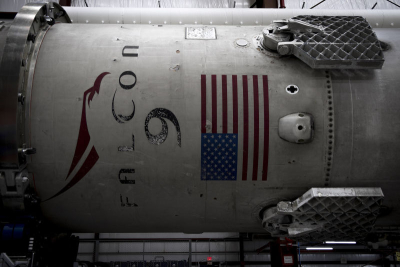As regular readers of Behind The Black know, I routinely report on the depressing state of western culture, where our intellectual academic community appears more interested in standing with their eyes closed and their fingers in their ears yelling, “La-la-la-la-la-la-la-la!!!” as loud as they can so they can avoid learning new things or hearing facts that might disturb their tiny little bubble of incorrect assumptions. Such behavior is comparable to the close-minded thinking that caused the medieval dark ages, when the search for knowledge died and Roman culture withered. It took a thousand-plus years for western civilization to come out of that shadow and begin to grow again.
The success of SpaceX yesterday to vertically land the first stage of its Falcon 9 rocket while also successfully putting eleven smallsat satellites in orbit however that gives me hope that a dark age is not coming. Despite living in a time when freedom is denigrated, when free speech is squelched, and when oppressive regulation and government control is the answer to every problem, the enduring spirit of the human soul still pushed through to do an amazing thing.
SpaceX’s success is only the beginning. The ability to reuse the engines and first stage will allow them to lower their launch costs significantly, meaning that access to space will now be possible for hundreds if not thousands of new entrepeneurs who previously had ideas about developing the resources of the solar system but could not achieve them because the launch costs were too high. In fact, the launch of Orbcomm’s smallsat constellation by this Falcon 9 demonstrated this. Not only is this company proving the efficiency of smallsats, they now have a launch vehicle, the Falcon 9, that they can afford to use. In the past Orbcomm would have been hard-pressed to finance its satellite constellation using the expensive rockets of older less innovative launch companies like Boeing and Lockheed Martin.
SpaceX however is not alone in revolutioning the launch industry. Blue Origin has also demonstrated some of the same launch capabilities as SpaceX, vertically landing its first stage. In competition these two companies and their armies of brilliant and creative engineers are going to make it possible for the human race to explore and colonize the solar system.
Even as old Earth sinks into increasing regulation, oppressive rule-making, and tyrannical close-mindedness, the explorers of the solar system, led by this new American launch industry, will break away from that morass. Hopefully, the new space-faring societies they create out there amid the stars will, like the settlers of North America in the 1600s, help re-establish freedom for future generations back here on Earth.

